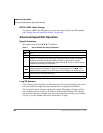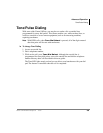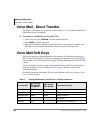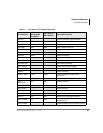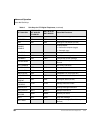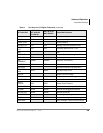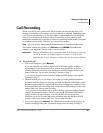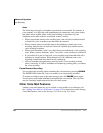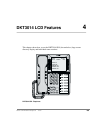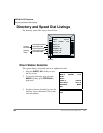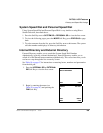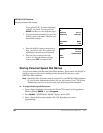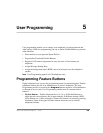
Advanced Operation
Call Recording
62 Strata CTX DKT/IPT Telephone 10/03
Notes
The following notes apply to telephone systems that are networked. For instance, if
your company is so large that some departments are connected to one system (node)
and others are on another (either in the same building or in another city), the
telephones on the other node are considered “remote” stations.
• When a station that started voice recording puts a line on hold (consultation-hold
or line-hold), voice recording stops and cannot be resumed.
• When a remote station (on another node in the telephone system) starts voice
recording, then puts the call on hold, if that call is picked up by another station,
voice recording continues.
• When a local Attendant “splits” two callers that were conferenced, voice recording
stops. When a remote Attendant “splits” two callers, voice recording is unaffected.
• If a recorded call is put on Line hold, voice recording stops when that held call is
picked up by another station. When the held call is in a different node, voice
recording is unaffected when the held call is picked up.
• ACD or Attendant call monitoring cannot be used if voice recording is taking
place. Conversely, if ACD or Attendant call monitoring is taking place, you cannot
use voice recording.
Pause/Resume Recording
You can pause the recording while continuing the conversation by pressing 365(6.
The PS/RES LED flashes red. Your conversation is no longer being recorded.
To resume recording as part of the same message, press the
365(6 button again.
You can pause and resume indefinitely throughout the conversation. The only limit
may be a message length imposed by the voice mail system.
Other Voice Mail Features
Another voice mail feature lets you to include a voice mailbox in a conference call.
See “Adding Voice Mail to a Conference” on page 15. For instructions on the Stratagy
Voice Mail features, refer to the Stratagy Voice Processing User Guide.



